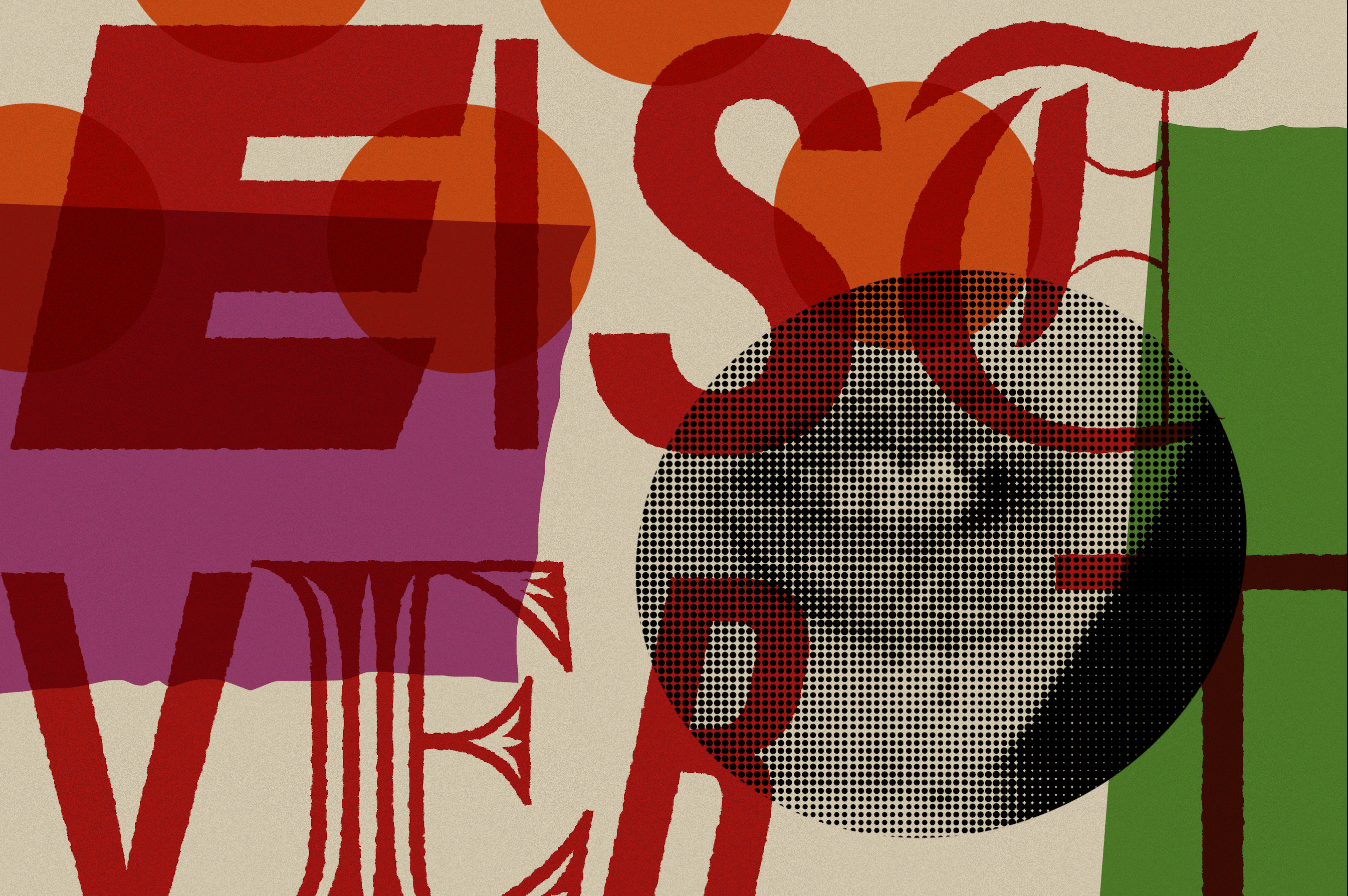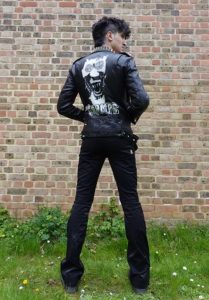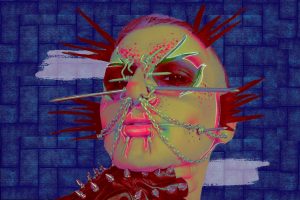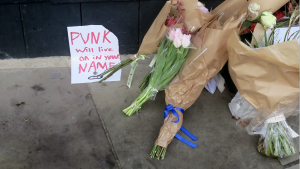
Clawing onto Capitalism: Subculture in the Modern Age
by isised | April 13, 2023
For many, Punk brings to mind a long-lost rebellion: a Vivienne Westwood-tinged era of underground DIY resistance, smoky cat eyes and youthfully optimistic, anti-establishment values. Yet, in Britain’s modern age, pop starlets wear goth-inspired pieces in glossy magazine editorials, and heavy metal band-tees fill the streets. Punk’s claws have been filed down so that high-street chains can market plaid and tartan to the masses.
That is not to say that all subcultures have been universally absorbed into the mainstream. In Japan, I have observed some of Punk’s original underground spirit being recaptured in the Visual Kei movement. Primarily based on music and fashion, it’s a movement designed to stand out, rebelling against the hierarchical and conformist aspects of Japanese society. Examining these two movements – the long-since commercialised Punk and the alive and thriving Visual Kei – can reveal the complexity of subcultures in the modern age.
Punk – once a movement with clear ideologies reflected in fashion, politics, and music – has now become a mostly superficial aesthetic. Its original, powerful non-conformity rallied against a suffocating 1970s Britain. Tartan patches and tight leather skirts were not just a striking look, but a defiant challenge to both social standards and societal dogma. The Punk philosophy was anti-authoritarian, emphasising individual liberty against governmental repression. This was particularly relevant in an era when censorship was rife in British media: the Sex Pistols’ single ‘God Save the Queen,’ a sly commentary on class struggle and royalism, was banned from all BBC radio stations.
Though Vivienne Westwood has now transitioned into a high fashion brand, its original Kings Road branch was emblematic of these Punk values. The store was a landmark where young radicals tried on ungendered, bondage, and fetish-inspired clothing designed to shock. In a daring statement, the homoerotic ‘Cowboys’ graphic tee, famously worn by Sid Vicious of the Sex Pistols, showcased male-male intimacy only a decade after the legalisation of homosexuality in England. The mere display of the shirt in Vivienne Westwood’s shop window resulted in a court prosecution under the 1959 Obscene Publications Act and a fine for ‘indecent exhibition.’ In this way, clothing could transform day-to-day existence into radical political protest. Punk’s political strengths were underwritten by drug use and a largely male-dominated music scene – the culture itself was not perfect, but its roots were radical.
Subcultures emerged as ideological movements in response to contemporary society. As Punk grew older with its original members, it lost its shock factor. Other subcultures began to replace it in the public zeitgeist, as they reacted to shifting social values and issues. But this evolution is not necessarily negative, instead allowing for growth and development over time. For instance, the 1990s Seattle sound (Grunge) movement took cues from Punk’s DIY culture. Rather than the shiny leather and extreme makeup of Punk, Grunge favoured thrifted florals and unmistakeably used jeans, for Grunge sought to combat the vapid commercialism and brand obsession of the 90s, rejecting Hollywood’s American Dream. Subcultures inevitably evolve as a distinct response to social pressures; standing strong against the mainstream, whether in a dingy Camden dive or on the streets of modern-day Osaka, these movements cannot be categorised into a simple, linear order – instead, they often coexist and overlap with one another.
But Punk has been forced to stay frozen, refashioned into a mere aesthetic by its modern purveyors. Many subcultures have simply become buzzwords on trend-hunting sites, like the LA-based Dolls Kill. Dolls Kill, like many of its contemporaries, markets the aesthetic of resistance without the substance. While its models wear distressed jackets and edgy slogan tees, the company’s values tell a more cynical story. Most infamously, the owner Shoddy Lynn posted an Instagram photo of armed policemen at the height of the Black Lives Matter movement, captioned: “Direct action in its glory.” While the 1970s Punk movement was not politically perfect by today’s standards, the support of police brutality is definitely at odds with the values of its original anarchic, anti-authoritarian members. Fashion brands have turned what was once group resistance against societal dogma into an individualistic means by which to differentiate oneself from the norm. While self-expression itself is not necessarily a bad thing, it has undeniably dislodged the movement from its powerful and political roots.
So what remains of British Punk? A Brazilian asylum seeker under the name of ‘Zombie Punk’ is perhaps the most famous figure in the contemporary London Punk scene. He can be easily spotted in Camden Town by his striking face tattoos and mohawk. Standing on the bridge with a cardboard sign reading “HELP A PUNK GET DRUNK,” he accepts spare change in exchange for photos. Although his Punk values may be genuine, in the eyes of sightseers and aspiring photographers, he has been deemed a local curiosity. The public’s mascot-ification of ‘Zombie Punk’ has set an alarming precedent for other alternative fashion wearers such as myself. When visiting Camden Town in gothic or emo ensembles, my friends and I are regularly photographed and harassed; we are made into local attractions like ‘Zombie Punk’ without our consent.
In search of modern subcultures, I have been forced to go further afield, to a country where alternative cultures have not yet been neutered. The Japanese Visual Kei music scene remains defiantly underground and local; it emerged as a chance for constrained youth to express themselves, which has managed to continue the same, non-conformist sentiment today. Visual Kei is a scene uncharacterised by a particular style of music: bands borrow freely from wildly different genres, including Glam rock, Classical symphonies, and Swedish heavy metal. Rather than composition style, it is the powerful ‘visual’ stage looks of its members that differentiates this subculture from the mainstream: think wild, spiked hair, industrial platforms, Rococo-inspired ensembles and heavy eyeshadow. Their conspicuous costumes are a far cry from the sober suits and beige Uniqlo uniforms one sees on the streets of Japan. While this commitment to the aesthetic may seem a far cry from Punk’s deeper anarchist roots, the very act of standing out is a far more blatant political statement in Japan.
出る釘は打たれる
The nail that sticks out gets hammered down (a Japanese proverb)
One of the country’s core values seems to be that conspicuous individuals will be punished for their non-conformity by those around them. Fitting into a group and maintaining hierarchy through honorific speech is integral to everyday life in Japan, so the choice to go outside the sartorial norm is far more radical than one might expect from an individualist, Western perspective. Visual Kei’s clothing forms a bastion against the stifling expectations of Japanese society. I first entered the scene by attending concerts for the heavy metal adjacent act JILUKA. Perhaps the band’s most famous member (and my personal favourite) is Sena, a flamboyant guitarist whose long pink hair and black leather ensemble proudly refute Japanese masculinity. It is difficult to imagine Sena achieving the same popularity in the stiflingly macho-Western metal scene; his self-expression is emblematic of Visual Kei’s radical gender fluidity.
Since Visual Kei bands are small, local affairs, members and fans are able to forge a tight-knit community, reminiscent of the DIY days of Punk. As I went to successive JILUKA concerts, I grew familiar with my fellow fans, many of whom were on a first-name basis with the members – one young mother had even introduced her children to them at a fan event. The venues were intimate, with scarcely more than 300 people at a time. So powerful was the connection between fan and artist that the most diehard would forgo holidays, instead catching overnight buses, bullet trains and planes across Japan to watch them in concert.
Such levels of dedication are not unique to JILUKA but instead are a widespread phenomenon across the Visual Kei genre: fans spare no expense on buying merch, such as 500-yen polaroid (cheki) snaps of their favourite members. The camaraderie between fans and artists within the Visual Kei community is encouraging, though it is underscored by the uncomfortable amounts of money a fan is forced to dedicate to the band. As with British Punk, commercialisation rears its ugly head. Instead of the mass-marketing of Punk, Visual Kei fans take unwieldy financial burdens upon themselves to support a band, leaving their favourite artists’ survival dependent on a small pool of loyal followers.
This financial sacrifice produces a distinct hierarchy among fans. The most dedicated claim superiority over newer fans, taking up prime spots closest to the stage, flaunting their band hoodies and badges as a mark of seniority. If a beginner attempts to break through to the front, they are quietly ushered back into the throng. This unspoken, rigid hierarchy uncomfortably mirrors the senpai-kōhai (senior-junior) dynamic of Japanese corporate culture, undermining the non-conformist attitude of Visual Kei. The atmosphere of the concerts themselves are also far more sober than their British counterparts; instead of the intense mosh pits and familiar shoving crowds, Visual Kei fans silently headbang and clap in sync to the music. While it is undeniably powerful to stand out amidst a beige-clothed majority, there is little beyond that original, purely ‘visual’ philosophy to be found in Visual Kei.
My most uncomfortable moment as a Visual Kei fan forced me to confront the conservatism lurking below the subculture’s surface. A friend and I were attending a taiban (a concert with multiple artists, most of whom we had never heard of), and we noticed – beneath generic merch and heavy metal motifs – hoodies marked with the Japanese ‘Rising Sun Flag’: a flag unmistakeably intertwined with Japanese imperialism and the colonial atrocities their regime committed. When the members finally arrived on stage, they were draped in the distinct white and gold uniform of Japanese naval officials. We promptly left the concert area, disturbed by the blatant romanticisation of such loaded imagery, yet our fellow spectators remained nonplussed, headbanging along as they had done for the bands before them. Whether these fans were actively imperialist or simply viewing these military emblems as another flashy fashion statement was unclear. Regardless, their reaction demonstrated the problem inherent to a subculture based on a ‘visual’ aesthetic rather than political protest. When one trades purely in an image, without thinking of social and political ramifications, it can lead to a dangerous mishandling of deeply sensitive issues.
Clearly, neither British Punk nor Japanese Visual Kei is perfect. Be it the mass-marketing and aestheticization of Punk or the uncomfortable crossing over of finance and friendship in Japanese Visual Kei, subculture has had to claw onto capitalism to survive. In the modern era, Punk has been practically commodified beyond recognition – its original, radical roots erased. While Visual Kei provides an encouraging example of a thriving subculture, the absence of a political consciousness has proved deeply damaging. Yet both 1970s British Punk and modern Japanese Visual Kei can still provide a means of self-expression. For individuals, the very act of dressing in the fashion of a subculture is a powerful symbol of nonconformity. Capable of challenging not only convention but political dogma, subcultures have the potential to remain far more than just a costume.
Words by Thalia Roychowdhury.
Art by Dowon Jung.




